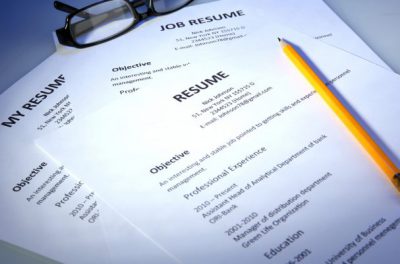Numbers On Résumés
Before we get started, I’m going to briefly discuss numbers and numerals. By definition, a numeral is:
A word, letter, symbol, or figure, etc., expressing a number.
There are rules regarding when to use the word numeral versus number. I’m going to ignore those rules and use number/s for everything. Now back to the looking at numbers.
Reading Résumés…
…is a boring job, the kind of job that can put you to sleep if you’re not careful. That’s why it’s so important that the person writing the résumé does everything in their power to keep the résumé screener awake and to make sure the screener doesn’t get frustrated.
One of the worst offenders on résumés is inconsistency, and when we talk inconsistency— numbers (and everything dealing with them), take home the prize.
Rules
The rules governing writing numbers can be long and complicated. But even worse than that, the rules are often in conflict. The few that seem to be fairly consistent are the following:
- Spell out numbers from one to nine.
- Hyphenate compound numbers from twenty-one to ninety-nine.
- Don’t start a sentence with a number.
- Use commas for numbers with more than three digits. (4,377 not 4377)
- If you use fractions, hyphenate them. (Two-thirds, not two thirds)
But like all rules, even these rules have exceptions. Which brings us to the point of this post—consistency. If you follow the few rules above, and if you’re consistent with the use of numbers on a resume, you’ll be way ahead of the game. So let’s start with the first area of interest…
Dates
Résumés are full of dates: the year you graduated; the date range of each company; the date range of the positions you held; dates of accomplishments; dates of awards, etc. And quite often, those dates are expressed in as many different ways as there are dates.
There are many ways that would be acceptable. The important thing is to be consistent.
Months Spelled Out? Or Numbers?
The place where dates are used most are in the Work History section, and the biggest problems I see are that some people use numbers to represent months and some spell the months out. Either way is all right, as long as you are consistent.
So, August 1999–May 2003 is perfectly fine, but so is 08/1999–05/2003, or even 8/99–5/03. The problems come up when someone starts out with one style and switches to another—usually to save space or to make it fit on one line.
I strongly suggest picking one style and sticking with it. My personal preference is using numbers combined with the full year, like this: 08/1999–05/2003.
On a side note, the punctuation separating the dates should be an ‘en’ dash[1], not a hyphen or an ‘em’ dash, and it should be used with no spaces surrounding it.




Alignment
I suggest right-aligning the date range for each company. If you don’t know how to do that, take a look at this video. And I suggest offsetting the dates for each position one or two tab stops left of the others.
Percentages
The most powerful parts of a résumé are often represented by percentages. Showing how much money you saved, or how many new accounts you brought in, or how much you improved yields, etc., can be very persuasive. And using percentages can be even more powerful when combined with dollars.
Example: Increased sales by $6 million, a 24% increase from previous year.
I used 6 instead of six to stay consistent within the sentence. It might not even be correct, but in my opinion it looks better and it has more impact.
Regardless of any rules cited above, I recommend consistency within a sentence whenever possible.


Bottom Line
A résumé is a simple document with a lot of complexity. One of the most important things you can do to improve your résumé is to eliminate mistakes. The other is to make it consistent. If you follow the advice in this post, and take a close look at all the numbers you use, you’ll be ahead of the crowd.
If you enjoyed this post, please share.
And if you want to learn everything you need to know about writing résumés, buy the book—it only costs about two cups of coffee.
Jim (Giacomo) Giammatteo is the author of the No Mistakes Careers series. He also writes gritty crime dramas about murder, mystery, and family.He lives in Texas where he and his wife have an animal sanctuary with 45 loving “friends”.
If you’re looking for more rules on writing numbers, you might want to take a look at this post.























Twitter: procvwriter
says:
This post echos just about everything I teach people when they’re trying to write their own CVs. Consistency is key and I also agree that numbers should be written as numbers, rather than writing the word out in full because it makes the numeral pop out more on the page.
On occassions rules need to be broken and in the case of CVs/resumes, the need to ensure key information is easily scannable is essential.